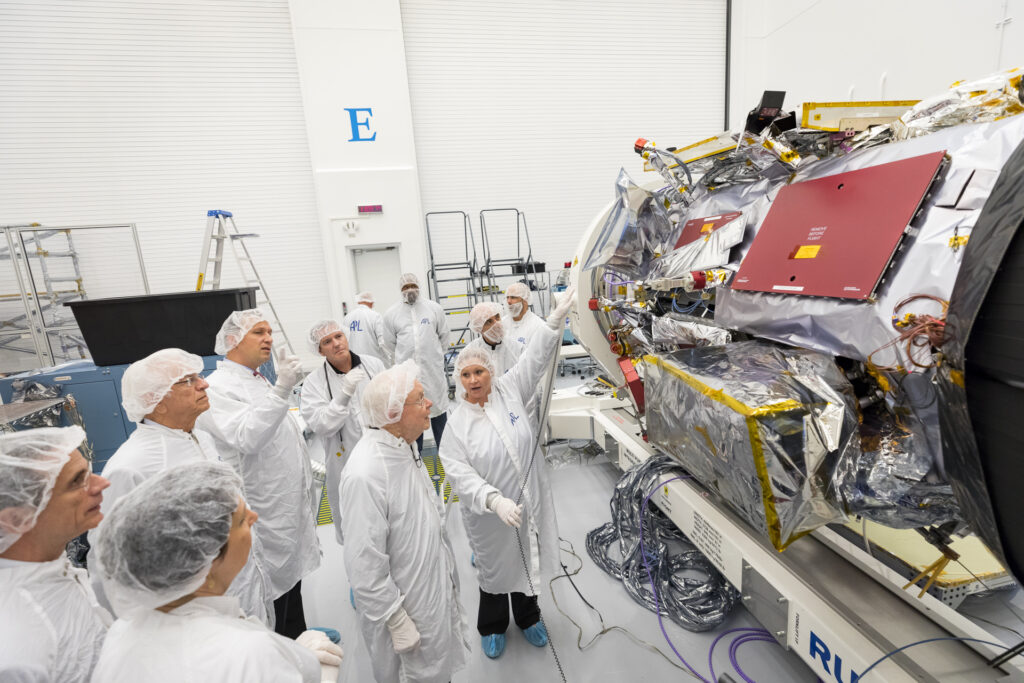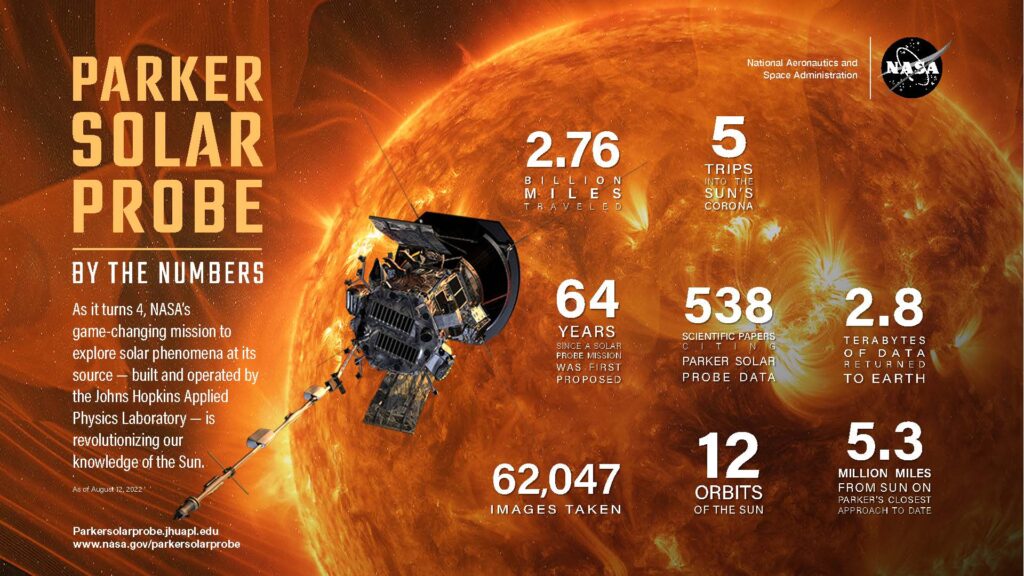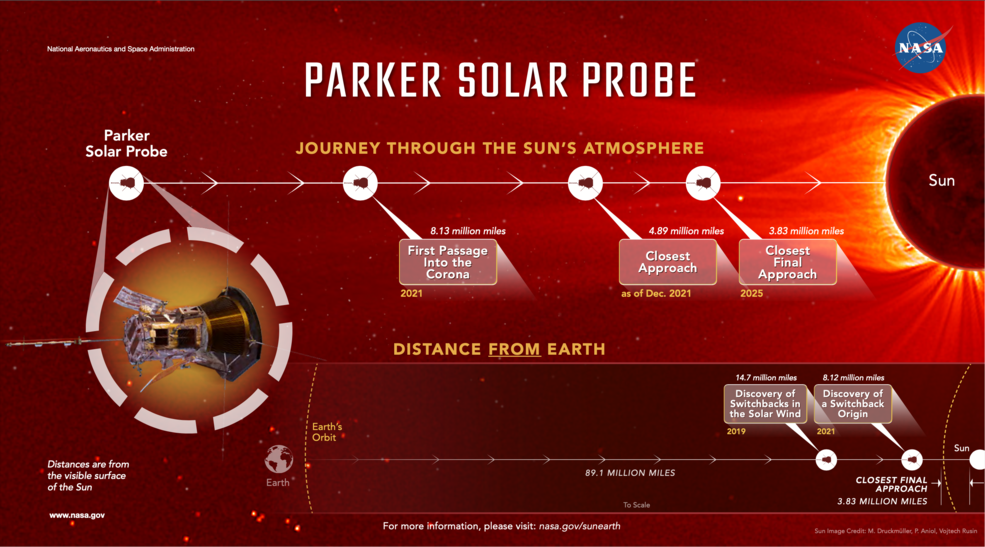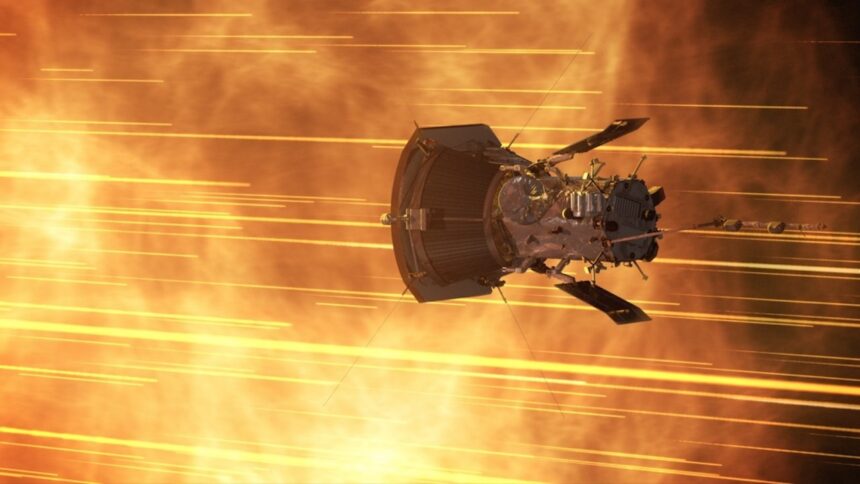The Parker Solar Probe from NASA ventured through a substantial solar eruption and captured the entire event on video. This marks the first time such close-up footage of a solar explosion has been recorded. The scientists at Johns Hopkins Applied Physics Laboratory released the video, showcasing an exceptionally potent coronal mass ejection that occurred in the previous year.

CMEs, or coronal mass ejections, are massive bursts of extremely hot plasma originating from the Sun’s outer layer. Comprising charged particles, they have the potential to induce radio disruptions and other disturbances when they impact Earth.
NASA reported that the CME that encountered the Parker Solar Probe was among the most formidable coronal mass ejections ever documented. Fortunately for the researchers focused on the solar study, the Parker Solar Probe not only traversed the CME but also withstood it, all while recording this extraordinary event on camera.
As per information provided by Johns Hopkins Applied Physics Laboratory, CMEs have the capacity to discharge magnetic fields, occasionally ejecting billions of tons of plasma at velocities ranging from 60 to 1,900 miles per second.
Regarding the CME incident that occurred last September, the Parker Solar Probe registered particles accelerating up to a remarkable speed of 840 miles per second, as reported by Johns Hopkins. This data has the potential to assist physicists in comprehending the forces responsible for propelling CMEs and propelling particles at such exceptionally high speeds.

The Parker Solar Probe’s ambitious mission to reach the Sun
NASA’s Parker Solar Probe is purposefully built for missions to study the Sun. Notably, it holds the titles of the fastest spacecraft ever and the closest approach to the Sun, safely reaching within 4 million miles of its surface.
We knew from the beginning that Parker Solar Probe would fly through CMEs. So NASA designed the probe to withstand the scorching temperatures near the Sun.
Jim Kinnison, the Parker Solar mission systems engineer at APL via a Johns Hopkins statement

The Parker Solar Probe is equipped with a tailor-made heat shield and an autonomous system designed to shield it from the Sun’s intense radiation, as detailed by NASA. Initially positioned approximately 5.7 million miles from the Sun’s surface, Parker detected the CME.
Subsequently, the probe maneuvered into the path of the CME’s shockwave. Remarkably, the Parker probe devoted nearly two days to investigating this specific CME and emerged from the encounter unharmed, as reported by Johns Hopkins.
The impact of space dust on Coronal Mass Ejections (CMEs)
In the same coronal mass ejection (CME) event, NASA scientists also investigated how the storm influenced interplanetary dust, which consists of particles dispersed in space. Their aim is to gain a deeper understanding of these interactions to enhance space weather forecasting capabilities in the future.
Does interplanetary dust affect the shape of a CME? Does it affect the speed of it? We’re just starting to understand that it does.
Russ Howard, a physicist at APL via a Johns Hopkins statement
The Parker Solar Probe has already provided researchers with insights into various solar phenomena, including a glimpse into the origin of “solar wind.”








